[ad_1]
Perennial crops are must-haves in a yard yard. Sowing seeds indoors, transplanting begins, and cultivating seedlings requires time, work, and vitality. These perennial species develop for a number of years after planting, which suggests you’ll solely should sow their seeds as quickly as or every few seasons for short-lived ones.
We’ll start seeds indoors, sow them open air, and transplant begins all through November. Relying in your native climate, November shall be frosty, delicate, or dry and warmth. Completely totally different ecoregions have completely totally different seasons all yr lengthy. Concern not, as there are options proper right here for any gardener, regardless of the native local weather.
A couple of of those frost-tender crops thrive in containers, which suggests you probably can ship them indoors to survive the winter. Using a mix of plant care and seed-starting strategies, we’ll flip your bare planters into ones bursting with free meals. Be a part of me on a tour of North American gardens to check further about these delicious, hardy, and nutritious perennial crops.
‘Duke’ Blueberries
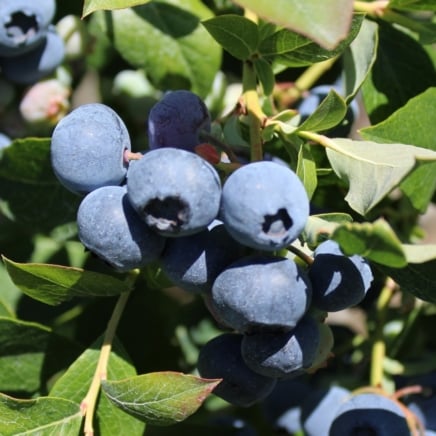

In the event you want to profit from the delicious crunch of a blueberry first inside the season, ‘Duke’ is the vary to resolve on. This bush not solely produces berries that ripen early, nevertheless produces prolifically, offering you with further blueberries than you’ll know what to do with.
Artichoke
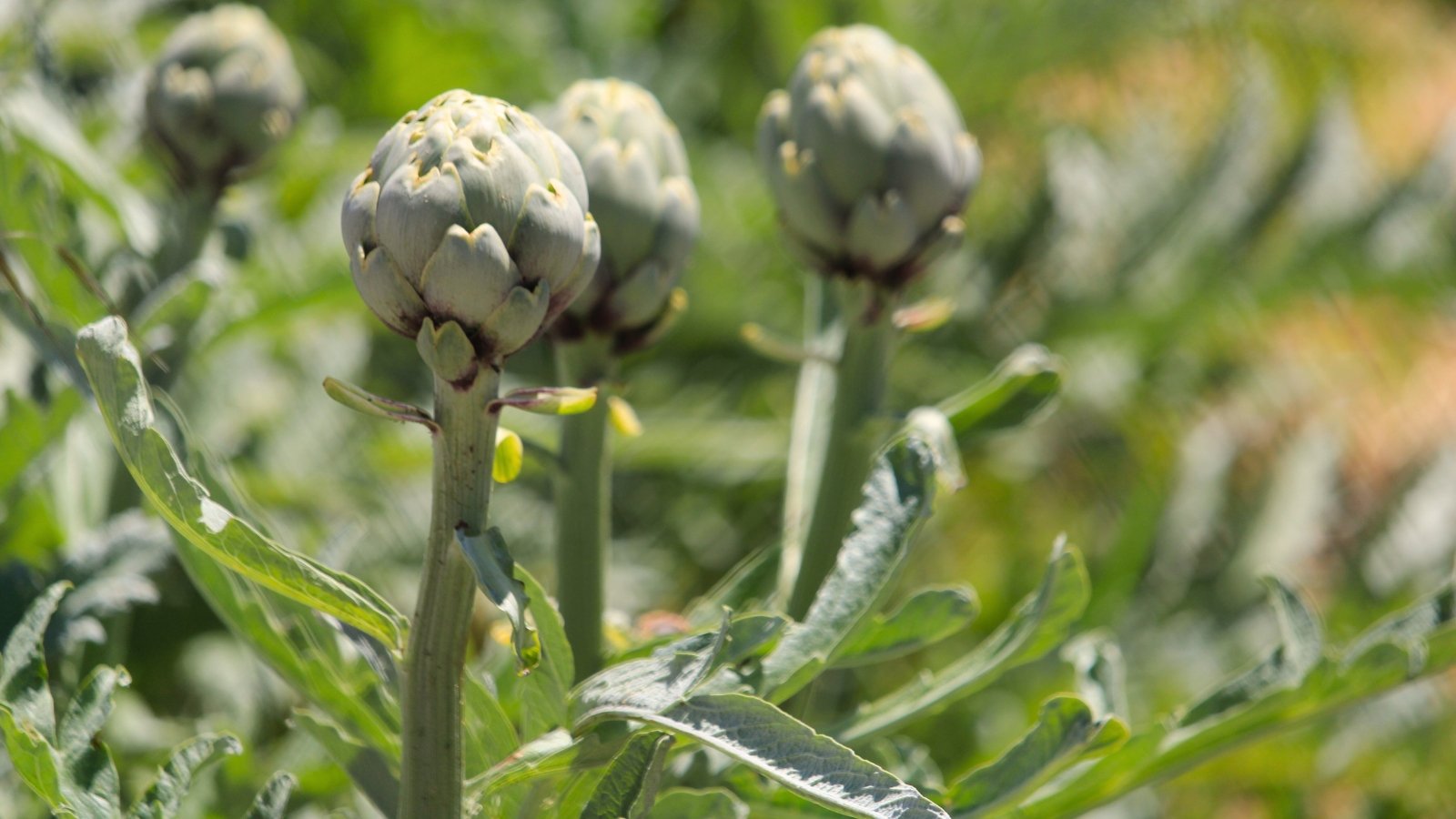

Artichokes are frost-tolerant perennials from Mediterranean areas that love getting a head start on the rising season. They type immature flower buds with edible parts, from the petals to the heart. Although perennial in USDA hardiness zones 7 by means of 10, some varieties perform properly as annuals in colder areas.
There are a variety of eventualities for planting artichokes all through November. In the event you occur to reside in a mild native climate, set out dormant roots or seeds in November for a crop the subsequent fall. Some species need two seasons of rising sooner than you probably can harvest them. In the event you occur to can’t wait two years or reside outdoor hardiness zones 7 to 10, try ‘Inexperienced Globe Improved’ or ‘Imperial Star.’ They produce edible flower buds of their first yr and perform properly in chilly zones.
The alternative state of affairs is for cold-climate gardeners. You’ll have to sow seeds indoors in pots 8 to 12 weeks sooner than your last spring frost date. In case your last frost is in February or March, November is an environment friendly time to start smitten by sowing seeds. Permit them to sprout leaves indoors, then transplant your seedlings into the yard a month sooner than the ultimate frost.
Asparagus
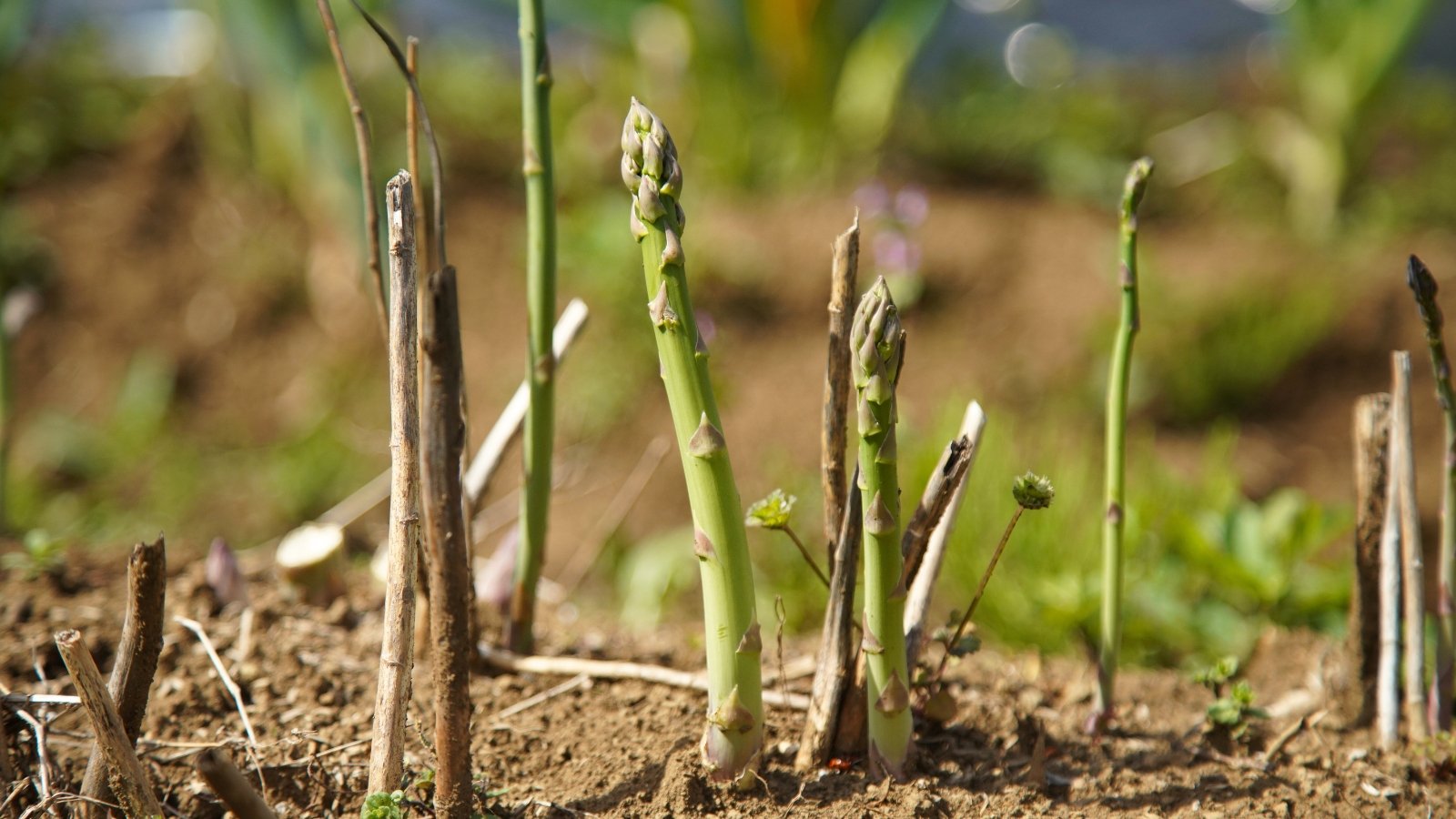

Asparagus sends up finger-like shoots in early spring that sort lacy leaves resembling ferns. We eat the immature shoots as they rapidly develop up from the underside. They’re tender, crunchy, and delicious as soon as they first sprout.
Plant asparagus crowns spherical November must you reside in a mild winter native climate. The roots will latch onto the moist soil and develop strong, making a thick root mass sooner than spring. Place them in order that they lie six to eight inches beneath ground stage, then steadily add soil once more to their trench as a result of the shoots lengthen. Go away the rising strategies uncovered to permit them to entry daylight.
Gardeners with chilly winter climates should sow seeds or crowns in early spring, considerably than in November. Your crops will attain a mature measurement of their first yr and are ready for harvesting of their second yr. They’ll need water when their soil dries, six to eight hours of direct daylight, and fertile nevertheless well-draining soil.
Garlic
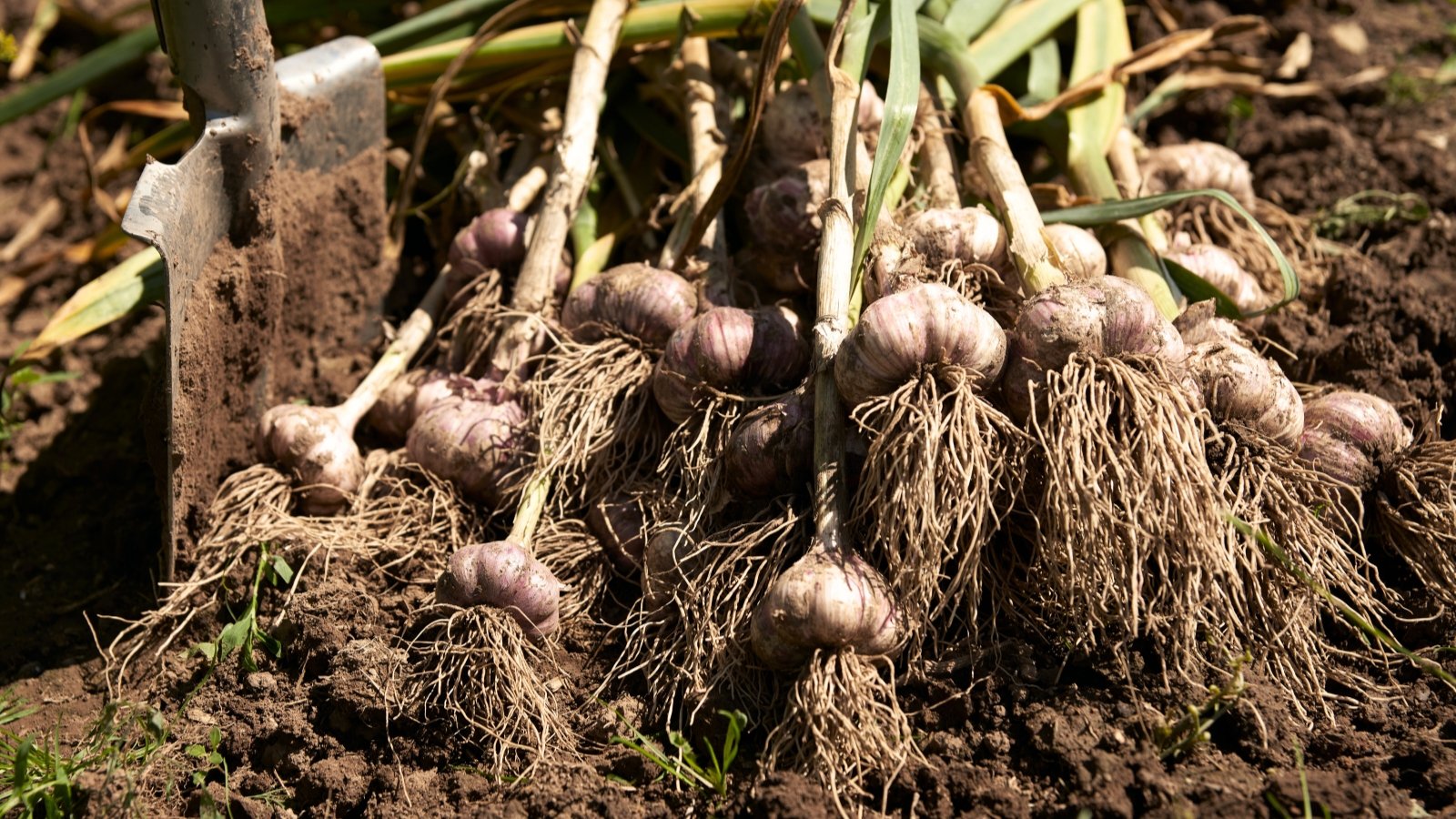

Garlic is the crop to plant all through November! It’ll use the chilly local weather to divide itself into numerous sections, which swell into specific particular person cloves from spring by means of summer time season. Get your cloves inside the ground now, and they also’ll create a bountiful harvest the next rising season.
In the event you occur to reside in areas in zones 9 and above, you can also develop garlic with some additional strategies. This crop requires freezing winter temperatures to divide and swell appropriately. Merely place your cloves in your fridge to simulate these circumstances. Obtain this one and a half to 2 months sooner than planting, then sow cloves open air two to a couple inches deep all through your cool season.
In the event you occur to plant cloves inside the fall, they’ll be ready to reap from July by means of August. Select hardneck garlic out of the underside as quickly because the tops fall over, and use a pitchfork to boost softneck varieties out of the soil. Maintain them to dry and treatment, then retailer them in your pantry for six to 12 months; softneck varieties preserve longer than hardneck ones, although hardneck varieties are easier to peel and are usually tastier than their household.
Goji Berry
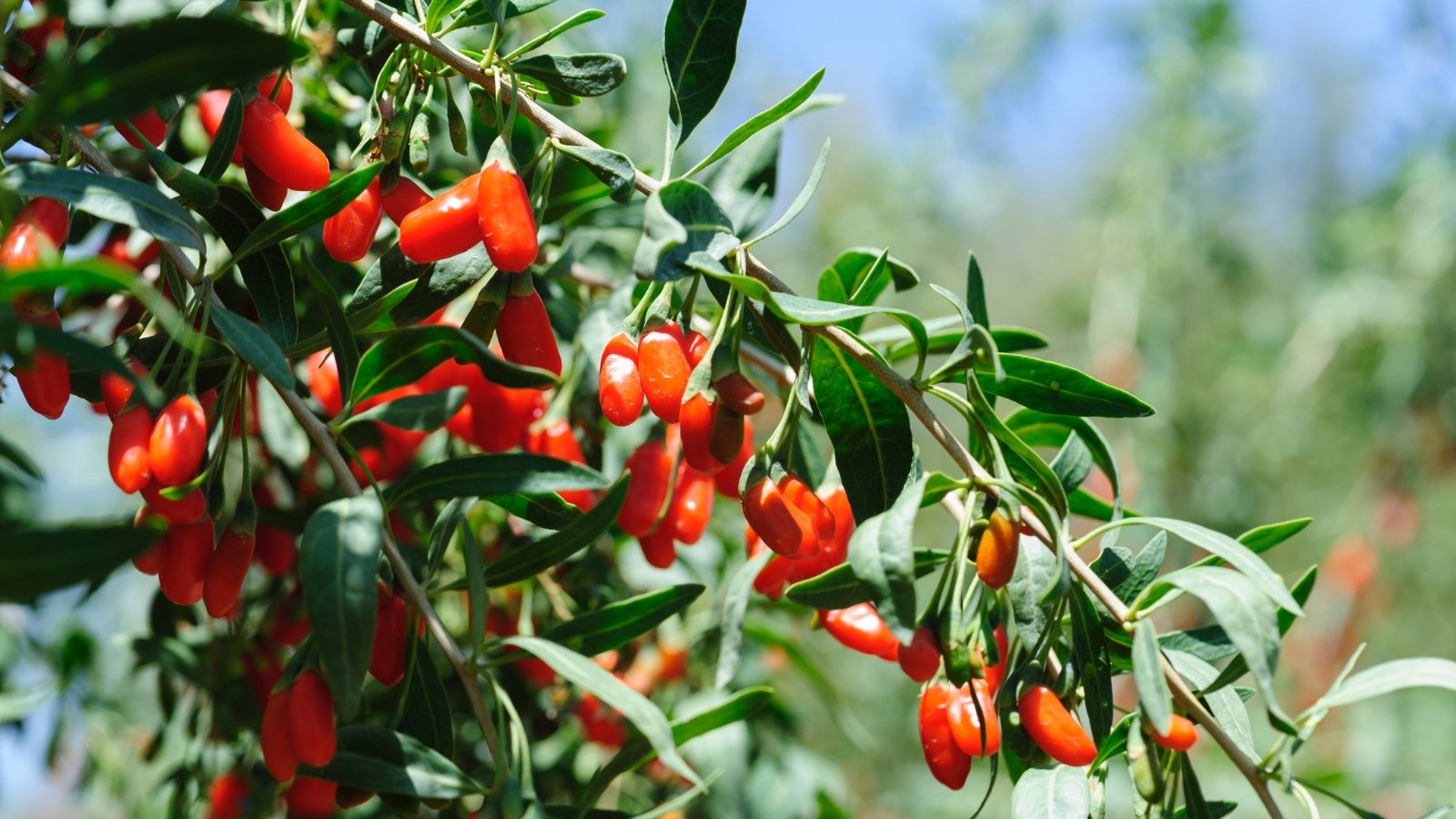

Goji berries are gaining repute worldwide—they’re crimson superfruits that develop off vining shrubs native to China. Transplant them a month sooner than your first frost in autumn in order that they acclimate all via winter. Their berries are tasty snacks latest or dried, and they also have confirmed benefits like serving to eye properly being as we age.
Goji berries sprout off two associated nevertheless distinct species of Lycium. Use Lycium barbarum must you reside in zones 4 by means of 6 since Lycium chinense is marginally hardy beneath zone 6. Every varieties develop purple flowers that pollinators frequent. They’ll swell into inexperienced, orange, then crimson berries. Select them as soon as they’re vivid crimson, like tomatoes.
Some gardeners won’t just like the flavour of the latest berries; they’re a tad a lot much less sweet than dried ones. In the event you occur to need dry goji berries, resolve them and permit them to dry on a countertop. As quickly as they’re wrinkly and lack moisture, retailer them in an airtight container in a cool, darkish location.
Pawpaw
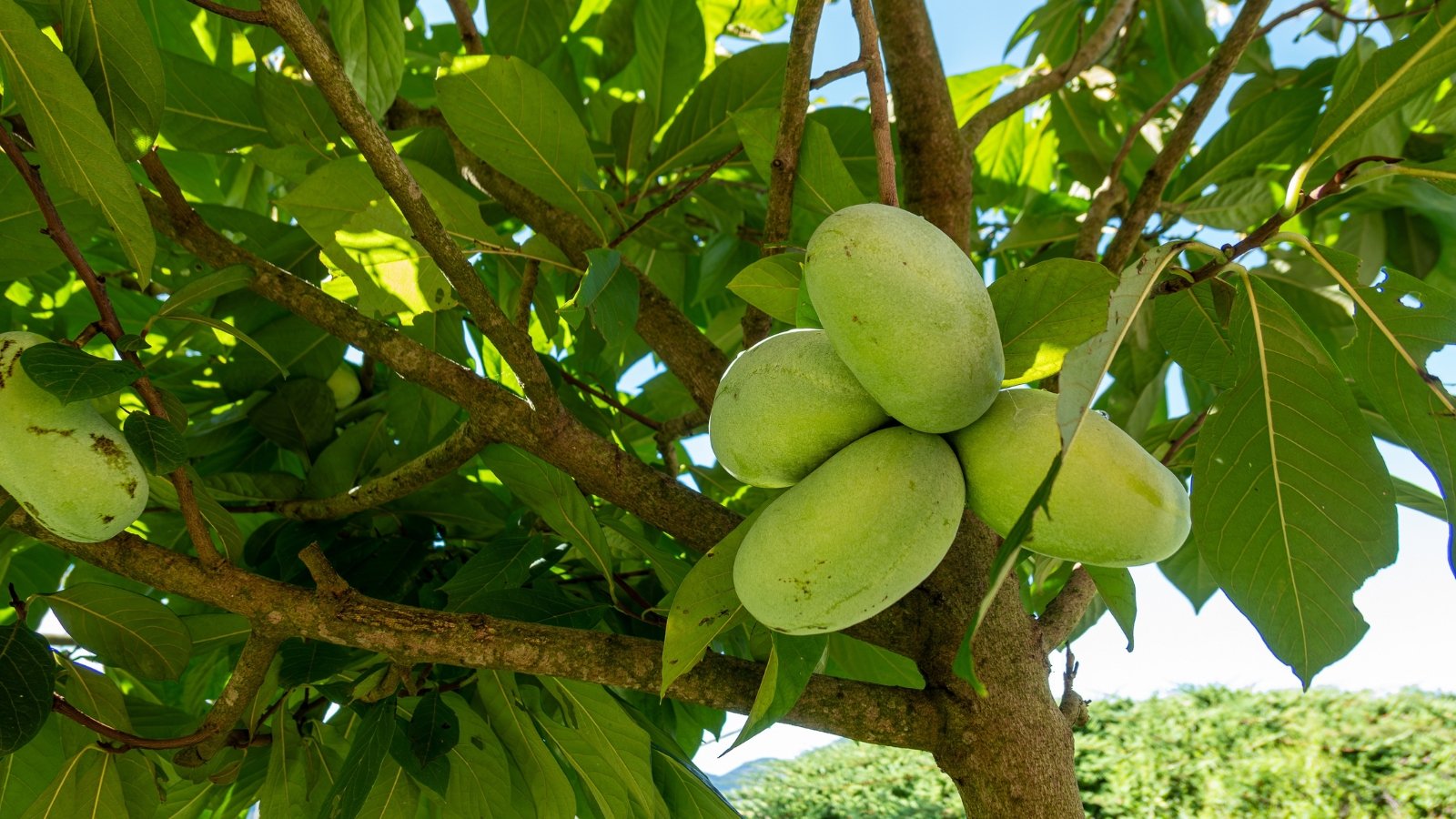

Pawpaws are the most important fruits from any native plant species inside the U.S.! They sprout off understory bushes that thrive in forests all via central and jap states. It naturally thrives beneath taller bushes, absorbing moisture from fertile, moist soils.
Plant deciduous fruiting bushes like pawpaws all through fall and early winter in order that they acclimate underground all through the dormant season. Their roots sit in warmth circumstances because of the soil insulates and protects them. By spring, your dormant bushes might have a healthful base to sprout latest leaves, flowers, and fruits.
Pawpaws type most interesting latest, as their texture declines each week or two after harvesting. You may also course of the fruit into jams, jellies, or syrups for year-round enjoyment. For optimum fruit manufacturing, plant two pawpaws shut to 1 one other; their flowers need pollen from a separate specimen to type fruit.
Blueberry
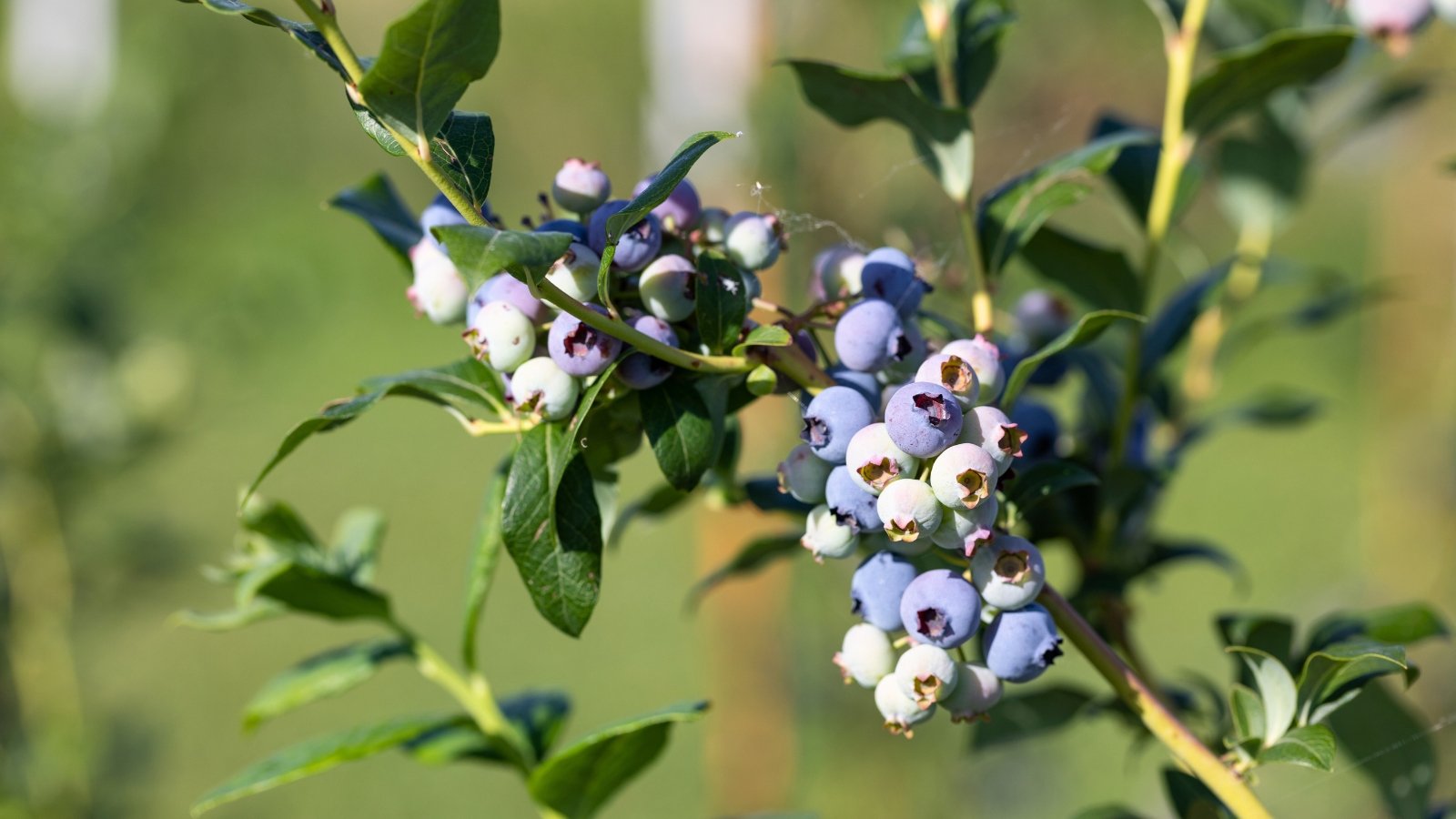

Like pawpaws, blueberries admire appropriate transplanting all through cool local weather. They lack leaves in November, nevertheless their roots develop if temperatures are delicate or warmth underground. Plant them in fall or early winter, and they also’ll produce dozens of berries in summer time season.
In case your native climate receives frequent, heavy frosts on this month, you’ll have to plant in early fall or spring. Laborious frosts can harm delicate transplants as they arrange themselves. Add a thick layer of mulch or compost atop the roots to protect them in opposition to freezing temperatures.
Some blueberry varieties are easier to develop in chilly or scorching areas than your typical species. Try ‘Duke’ in zones 4 by means of 7 or ‘Bluecrop’ in zones 4 by means of 8, and cultivars of the southern highbush species for zones 7 to 10. Zone 3 gardeners can choose from cultivars of the lowbush species, as they’re exceptionally winter hardy.
Rhubarb
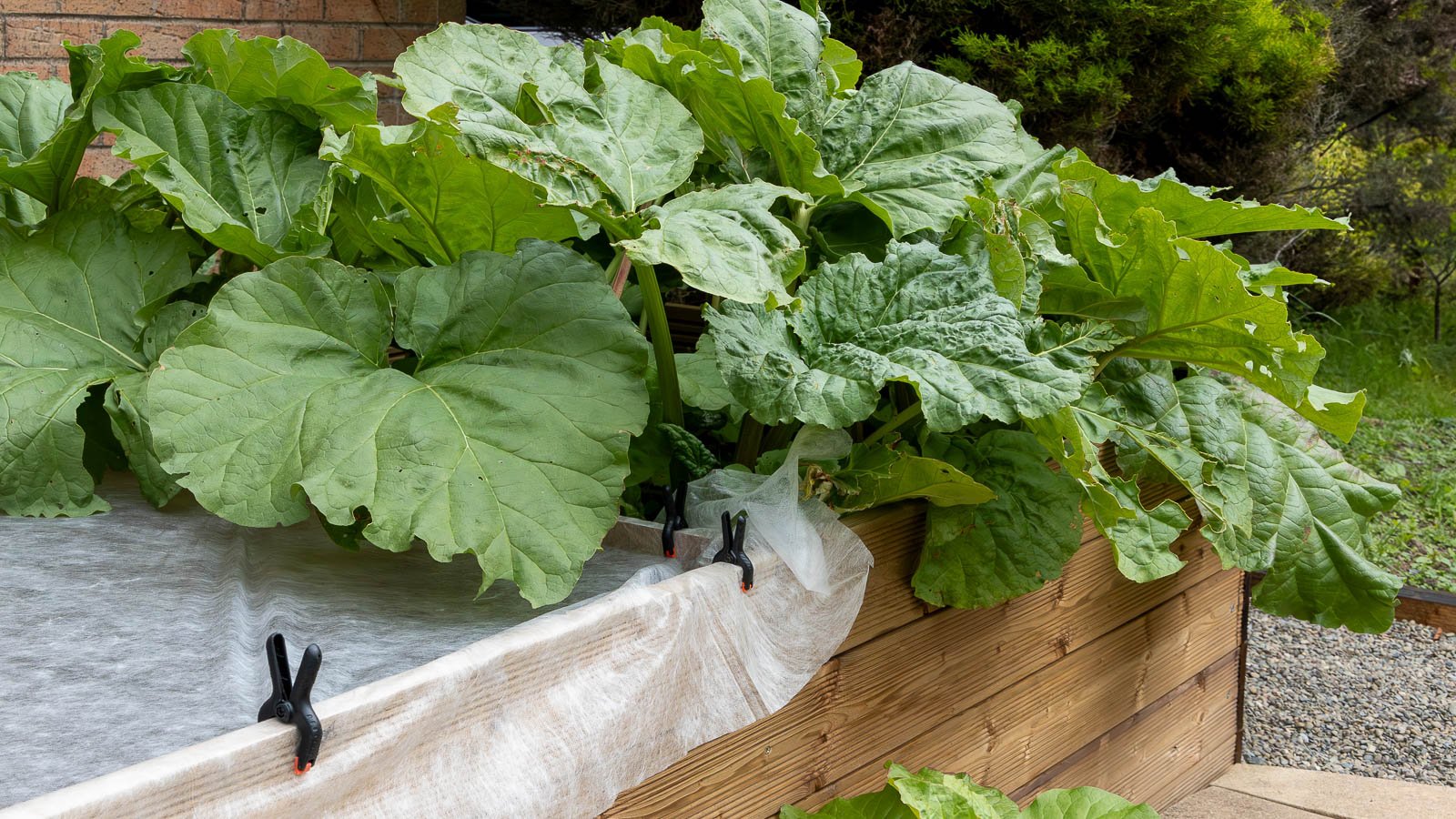

Rhubarb is a singular vegetable crop—part of it is poisonous! Don’t let this stop you from rising it though, as a result of the stems are tasty, sweet, and tart. The one inedible parts are the roots and leaves; they’re increased for compost piles than recipes. Use the crimson stems in pies, sauces, or jams.
Rhubarb loves cool local weather and enters dormancy from late fall by means of winter. Plant divisions with one or two buds from late winter by means of early spring; they’ll sprout shoots as a result of the local weather warms and days lengthen. You may also develop rhubarb in a giant container, although it’ll need dividing after three to five years of healthful progress.
Yard rhubarb varieties provide increased style, texture, and progress habits than species varieties. Try ‘Macdonald’ or ‘Crimson Cherry’ for crimson stalks, and ‘Victoria’ must you need stalks of a lighter inexperienced.
Sorrel
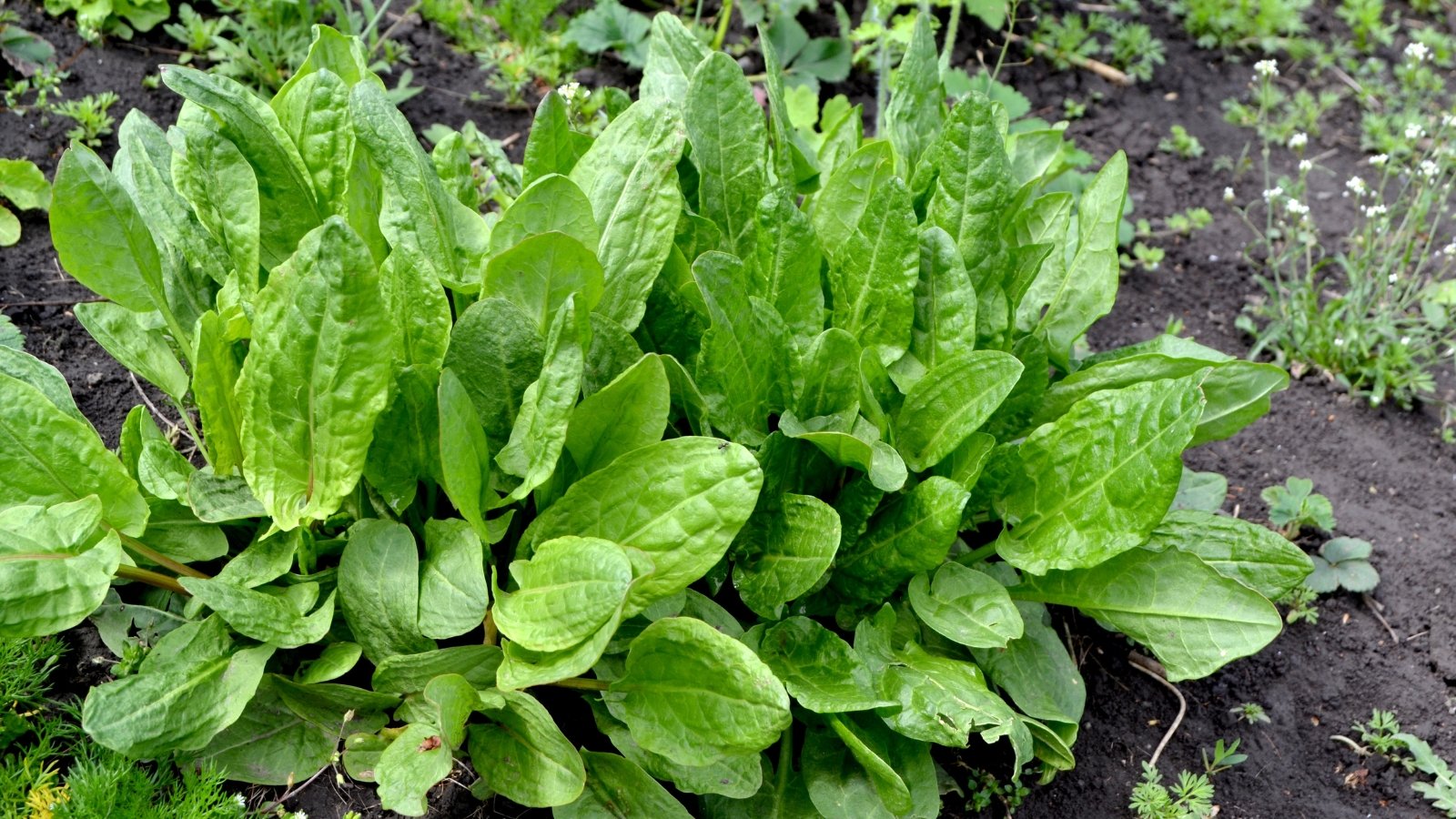

Sorrel is a cold-hardy perennial crop with a great deal of leafy greens, good for planting in November! It’s good for gardeners making an attempt in order so as to add further greens into their weight reduction plan, as a result of it sprouts new leaves in comparatively chilly local weather. Three sorts of sorrel exist for simple rising: frequent sorrel, French sorrel, and bloody dock.
Use frequent sorrel must you reside in a cold winter native climate, as a result of it thrives no matter recurring frosts. It might attain three ft tall and sprouts six-inch-long leaves good for latest consuming. Start seedlings indoors in November, then transplant mature ones beneath the chilliness of early winter. You might also sow seeds open air in order that they germinate in early spring.
French sorrel and bloody dock are increased for areas from zones 4 by means of 8, as they tolerate occasional droughts and warmer temperatures increased than their relative frequent sorrel. Use their leaves in salads, or prepare dinner dinner them like spinach in dishes that call for greens.
Tree Kale
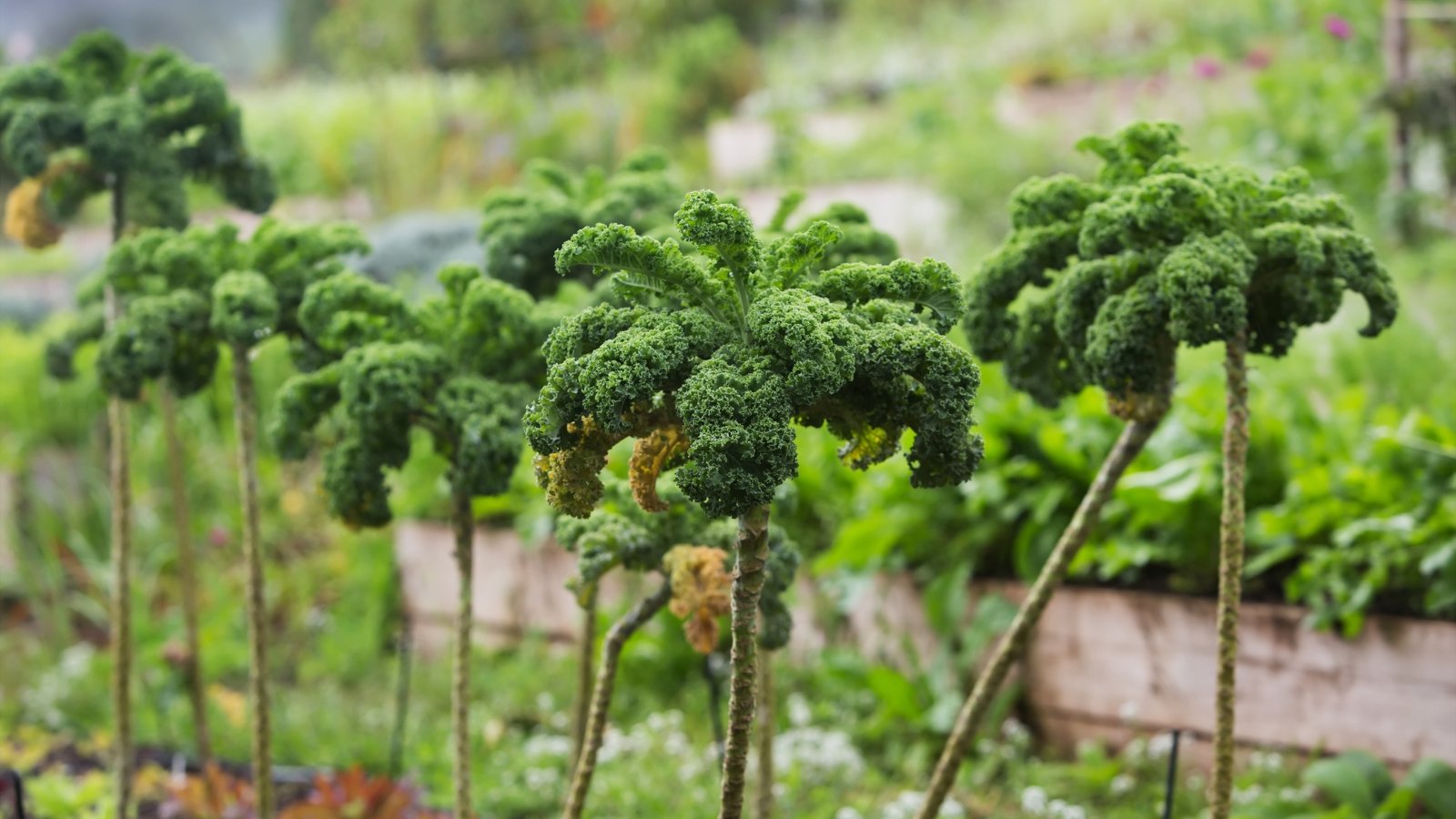

Tree kale, perpetual kale, and tree collard are all names for perennial kale. It’s final for gardeners who don’t have to sow seeds yearly! This type grows for numerous years with out flowering, producing solely the crunchy, edible leaves for simple harvesting. It survives winters all the way in which right down to zone 5, tolerating freezing temperatures to twenty°F (-7°C).
This cultivar moreover goes by the determine Daubenton kale after the French biologist Louis Jean-Marie Daubenton; he found it rising near his home and wrote extraordinarily about its rising habits and elegance. Nowadays, there are a variety of cultivars with distinctive traits. Try ‘Richmond’s Delight’ for purple stems and lightweight green-purple leaves, or ‘Panache’ for variegated leaves.
Plant tree kale begins from August by means of December, giving the youthful crops three to 4 weeks of cool nevertheless frost-free local weather. They’ll develop hardy underground with ample roots, then start pushing new leafy progress in spring. Give your specimens frequent water, full photo voltaic, and well-draining nevertheless fertile soil. They’ll thrive for years to return!
[ad_2]
Provide hyperlink
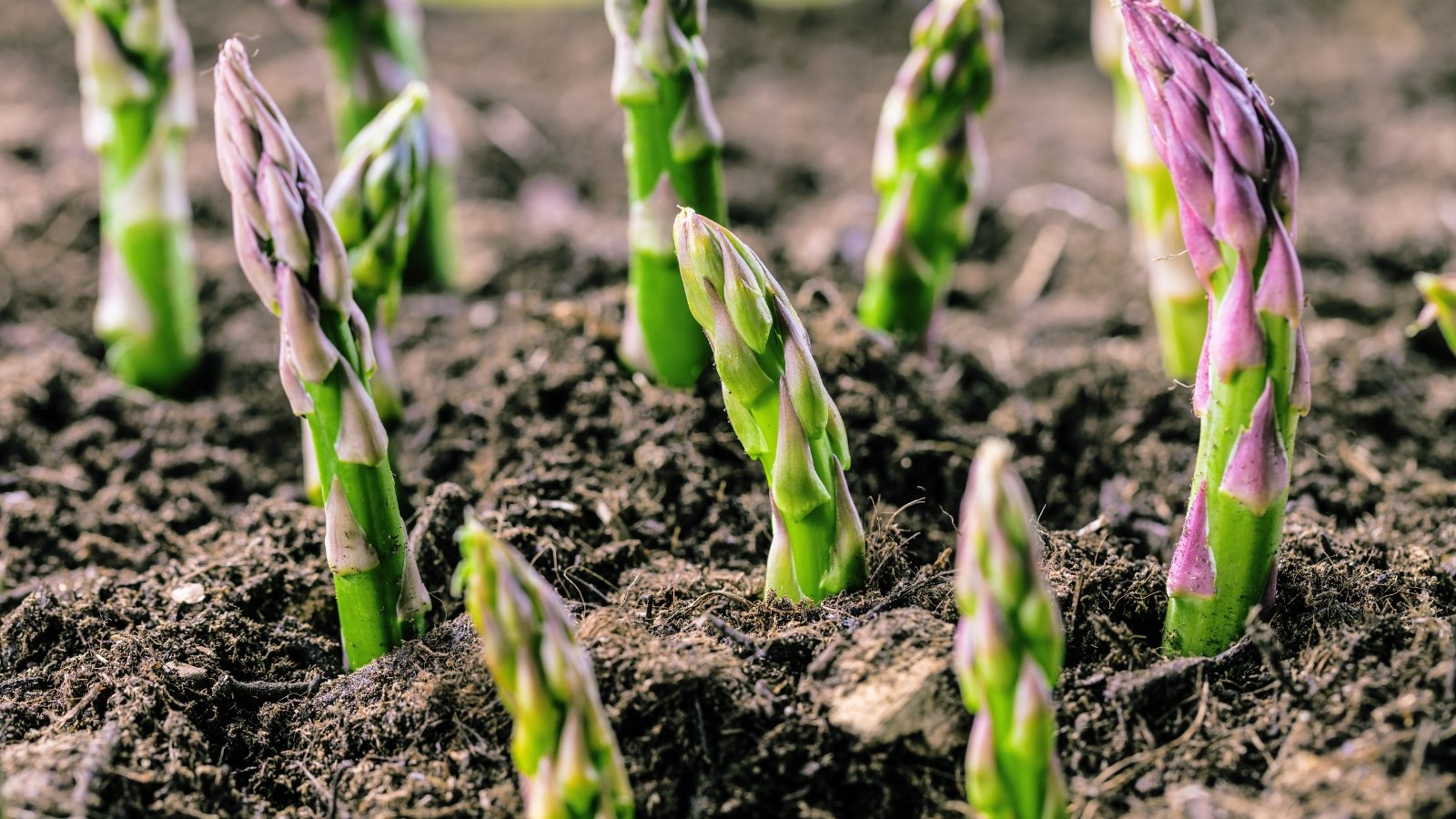
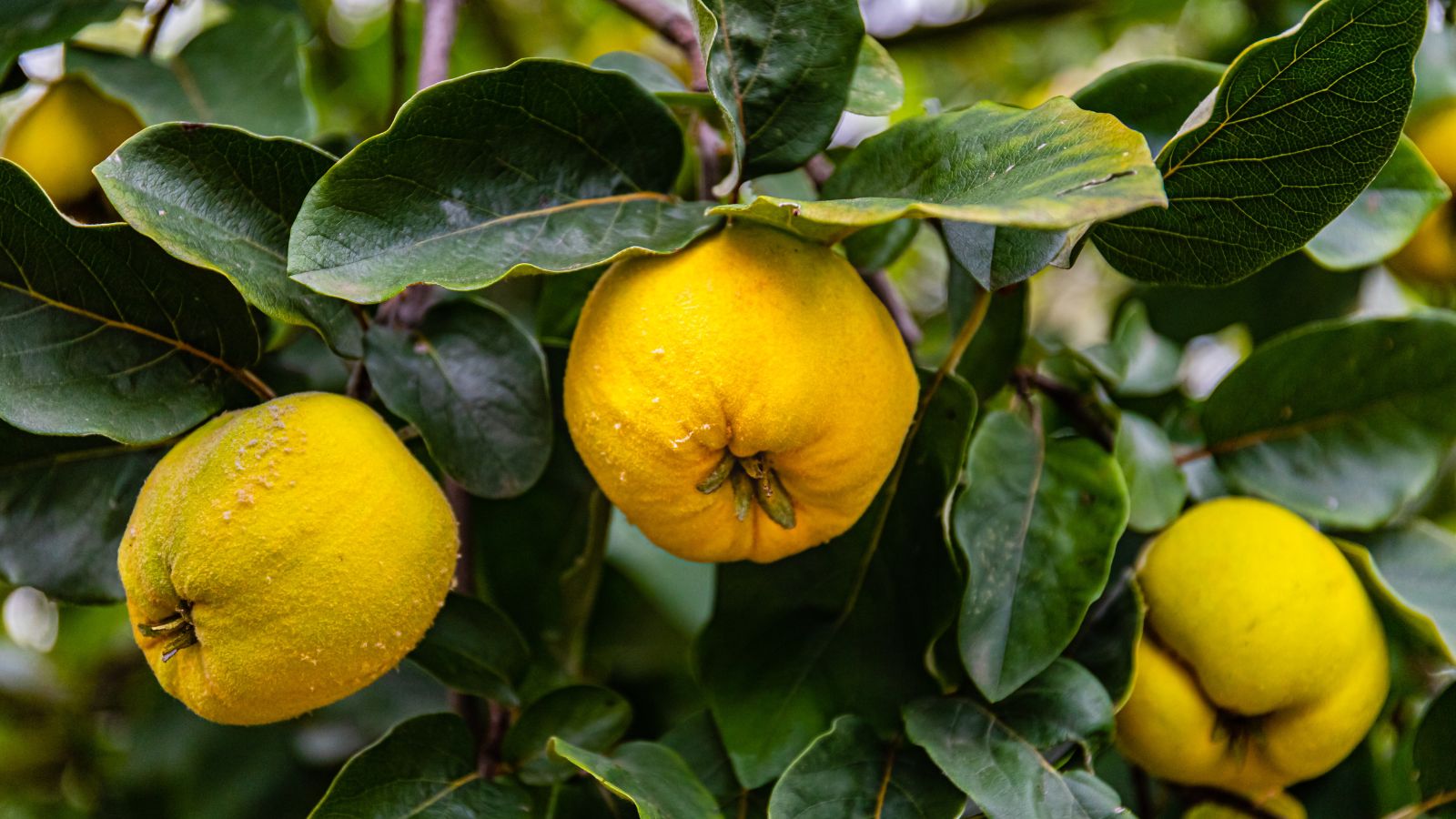
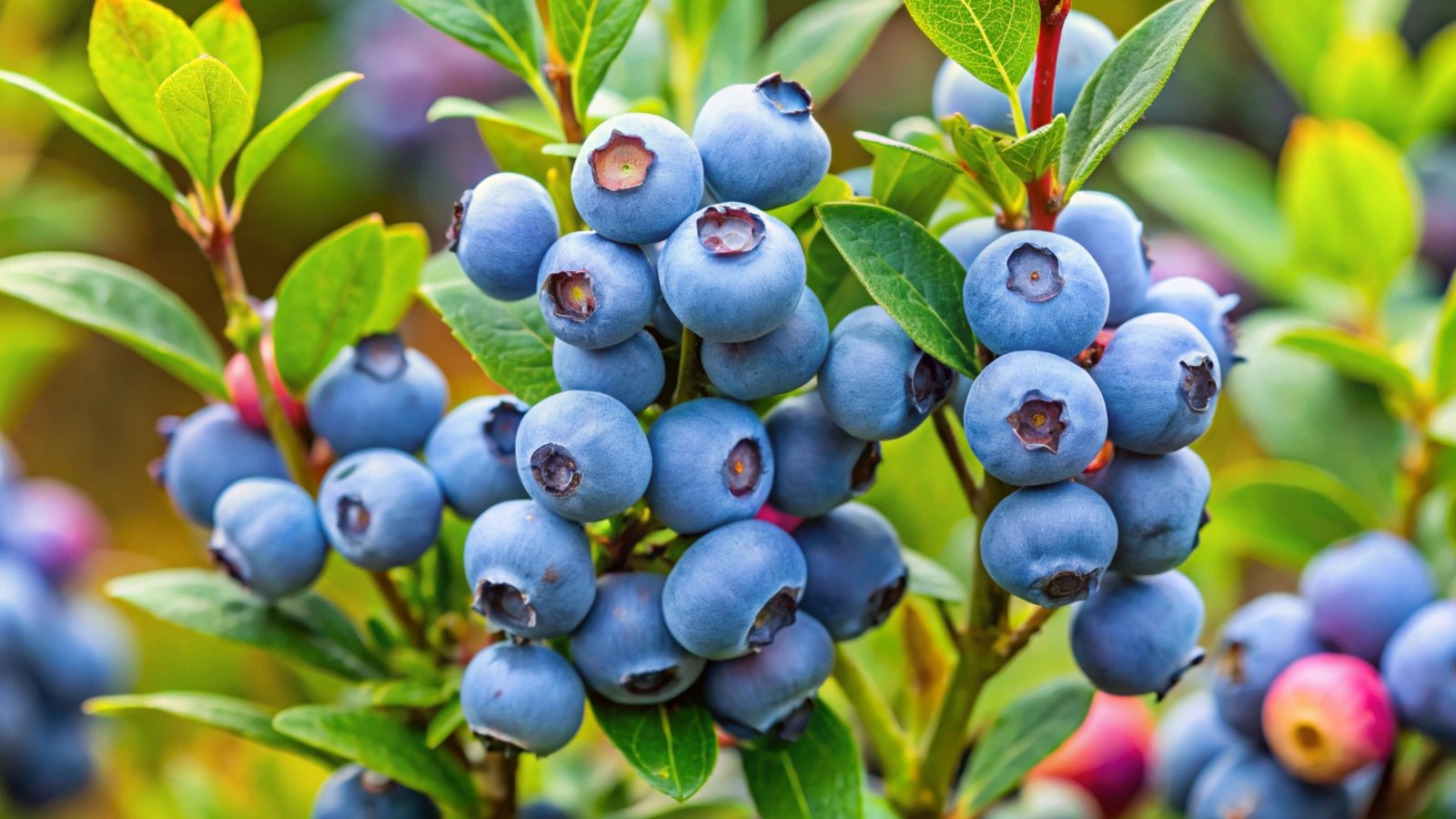
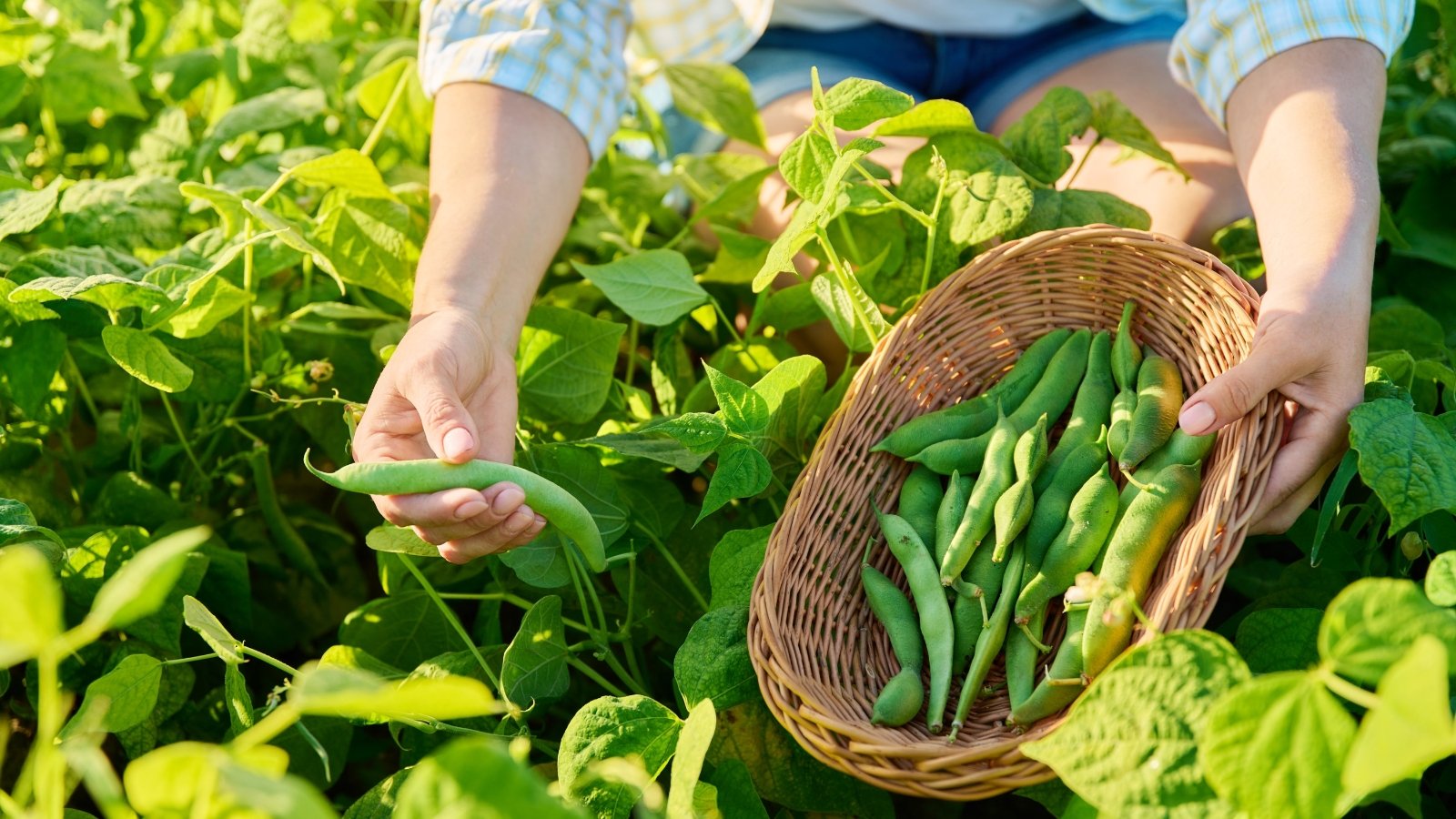
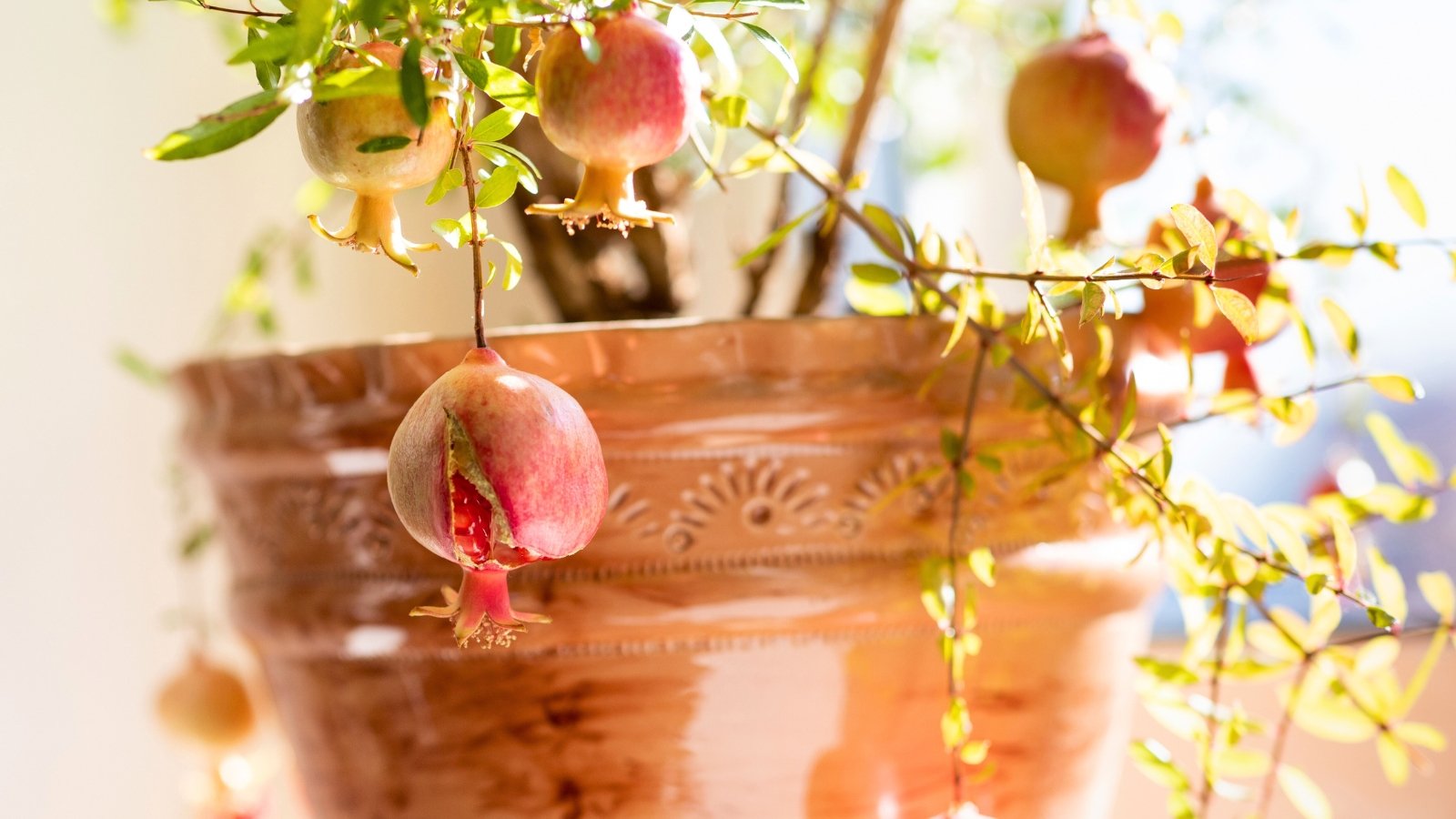
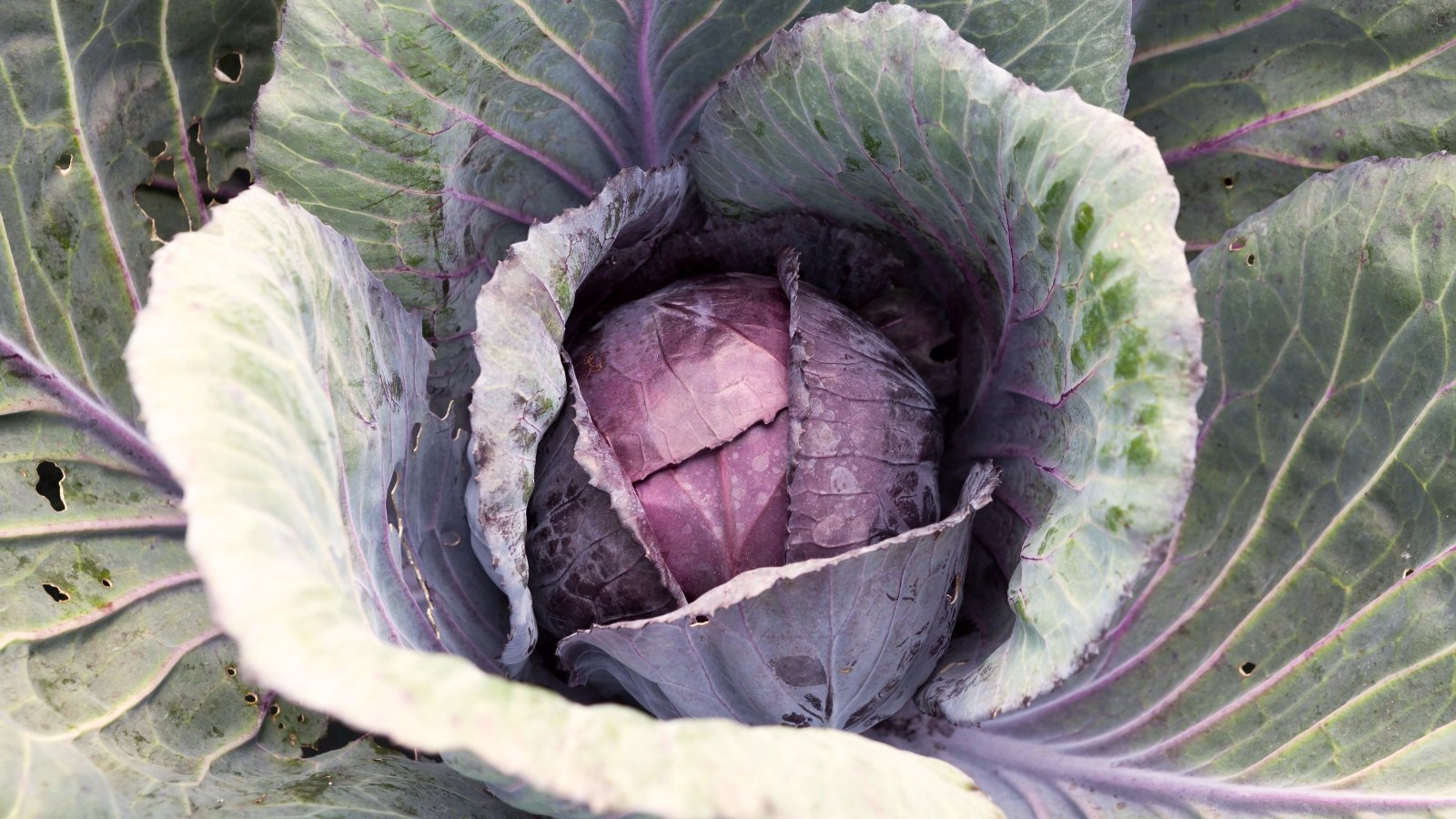
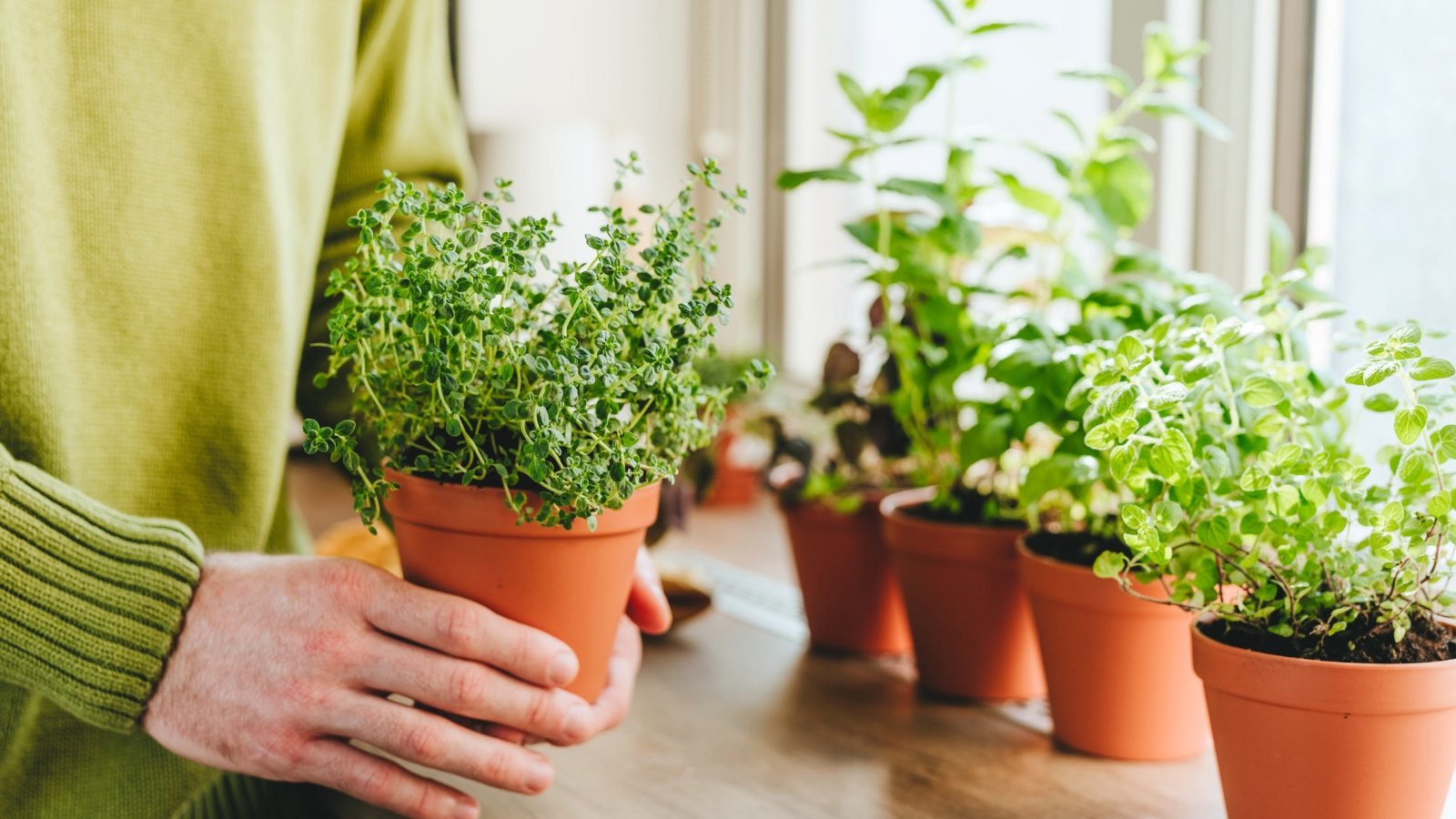
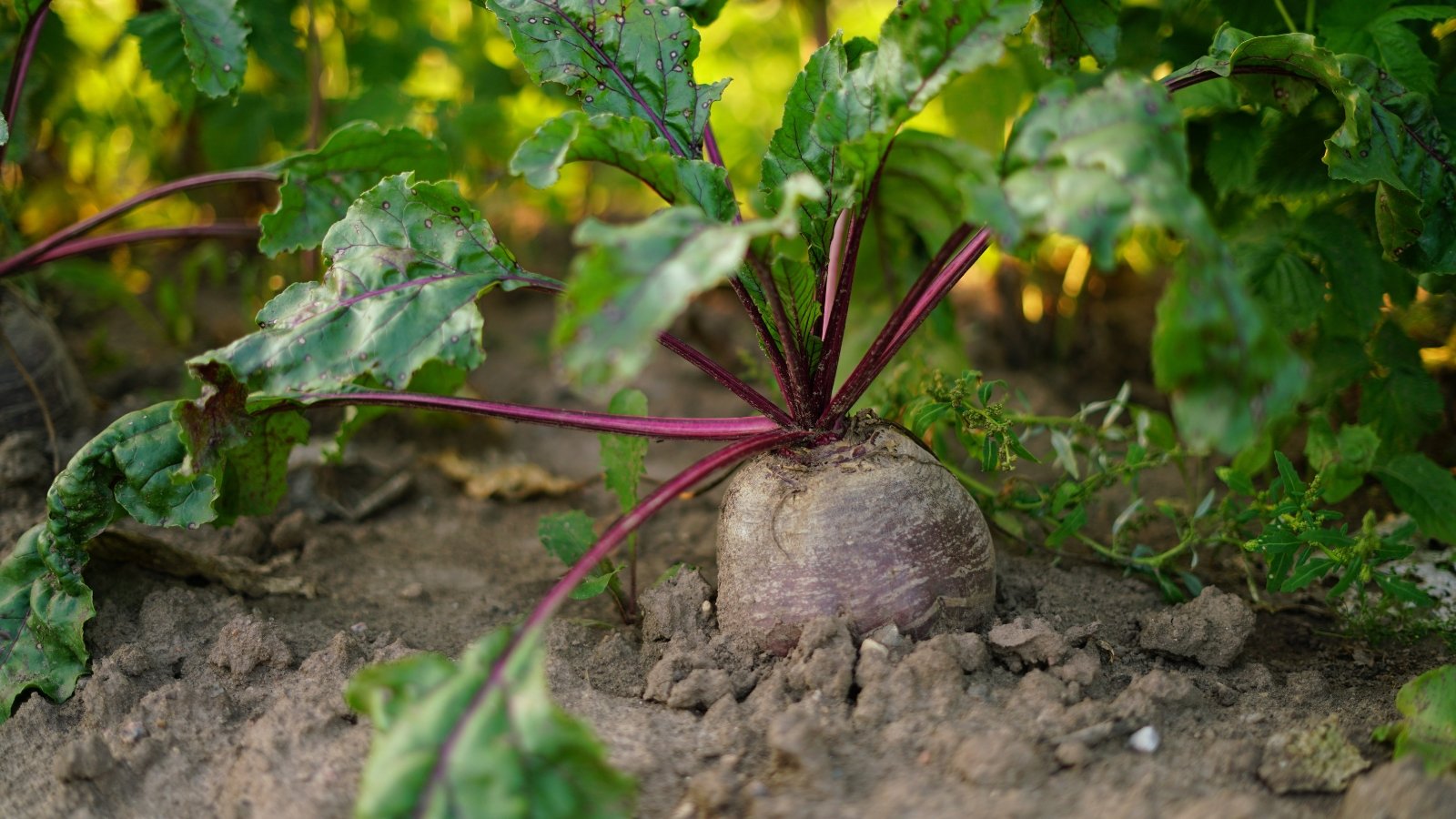
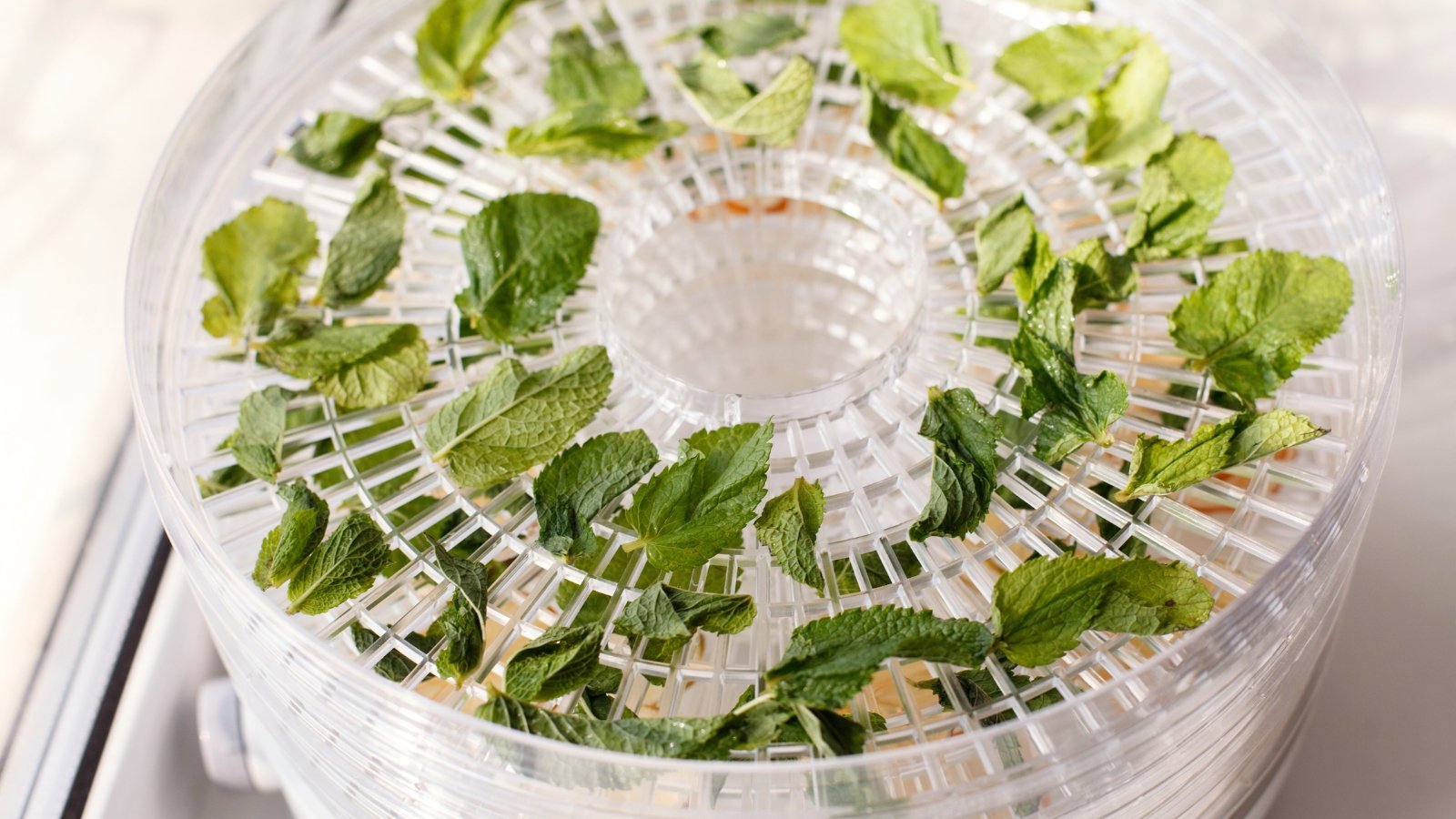
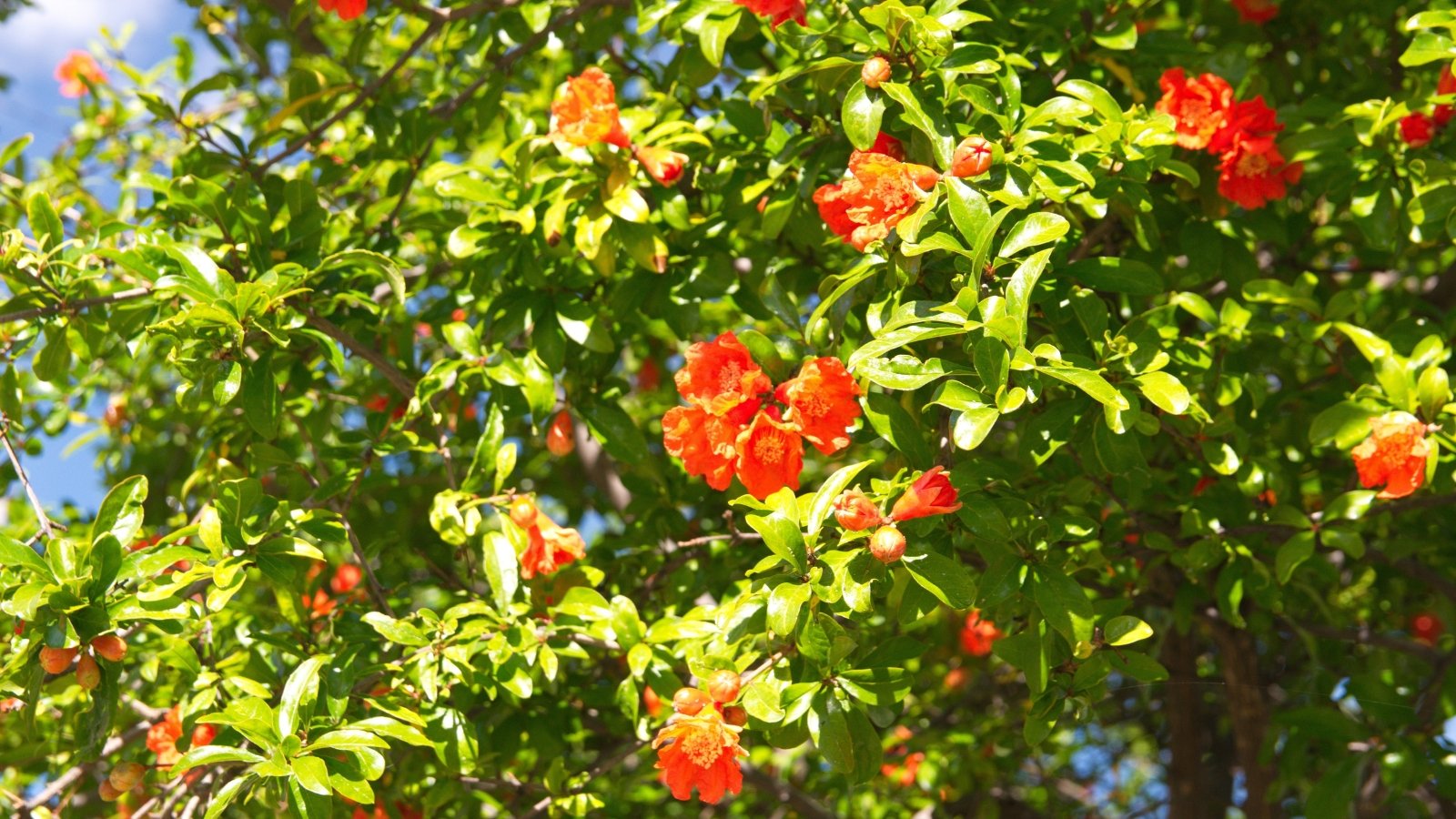
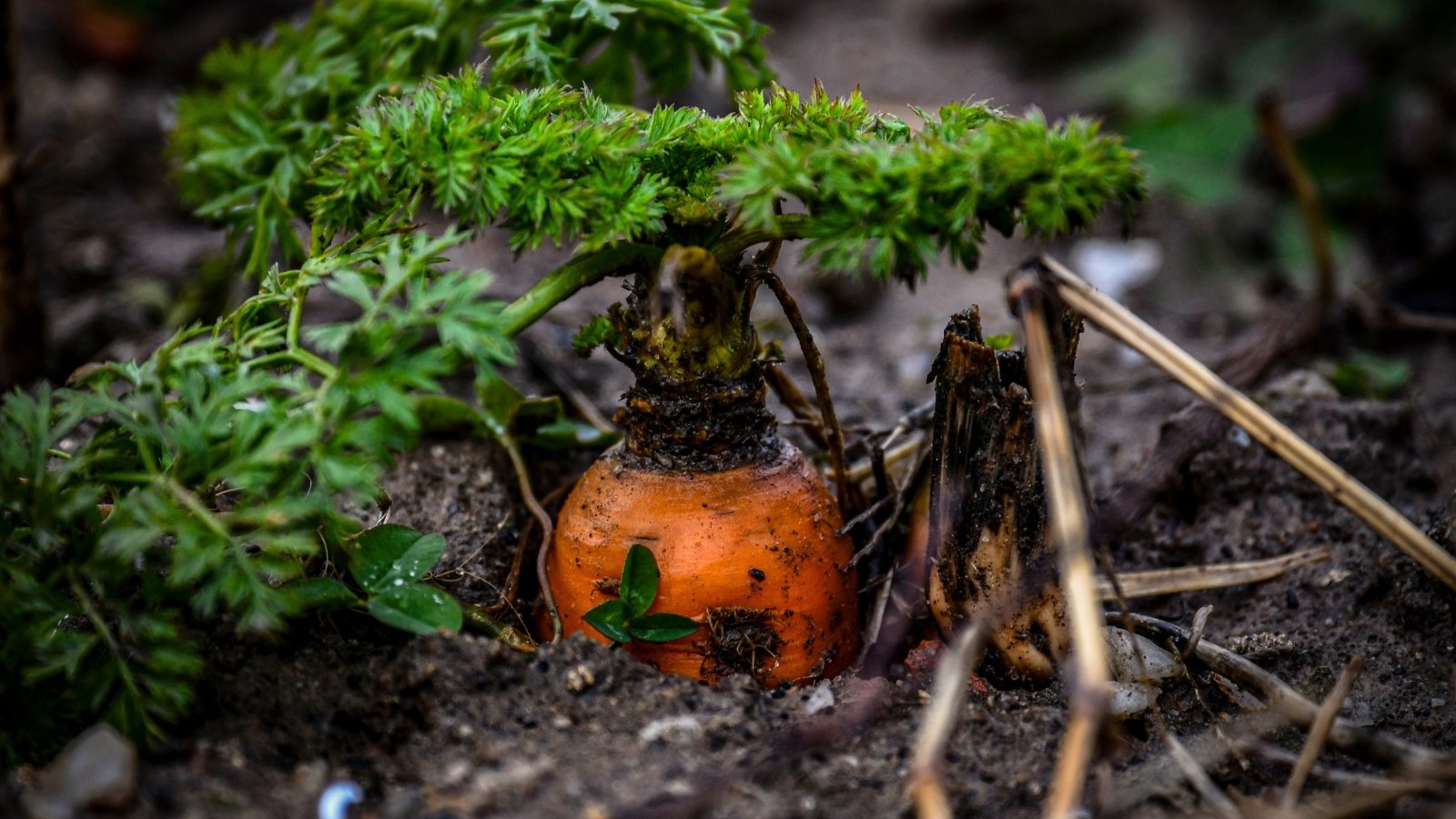
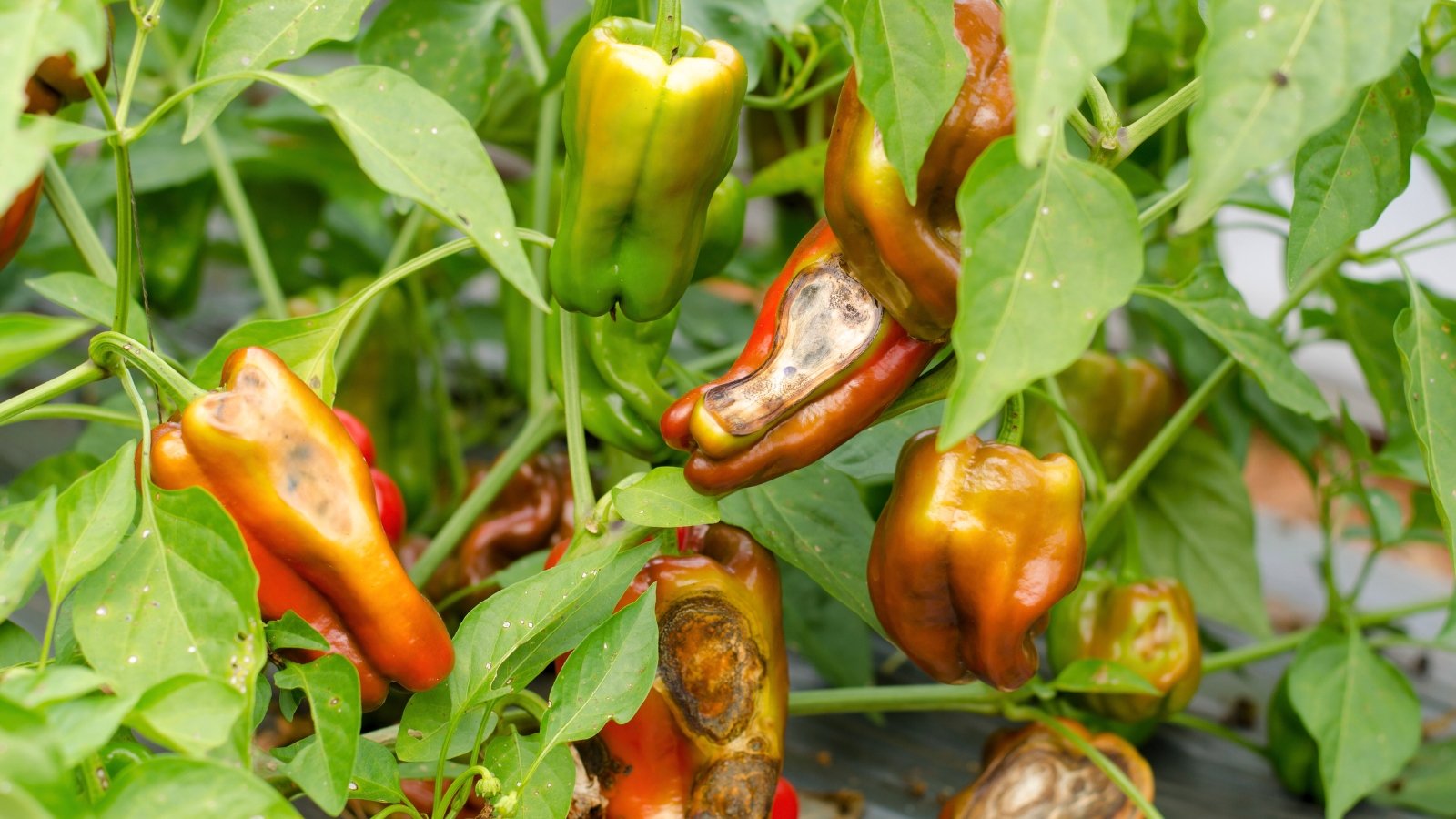
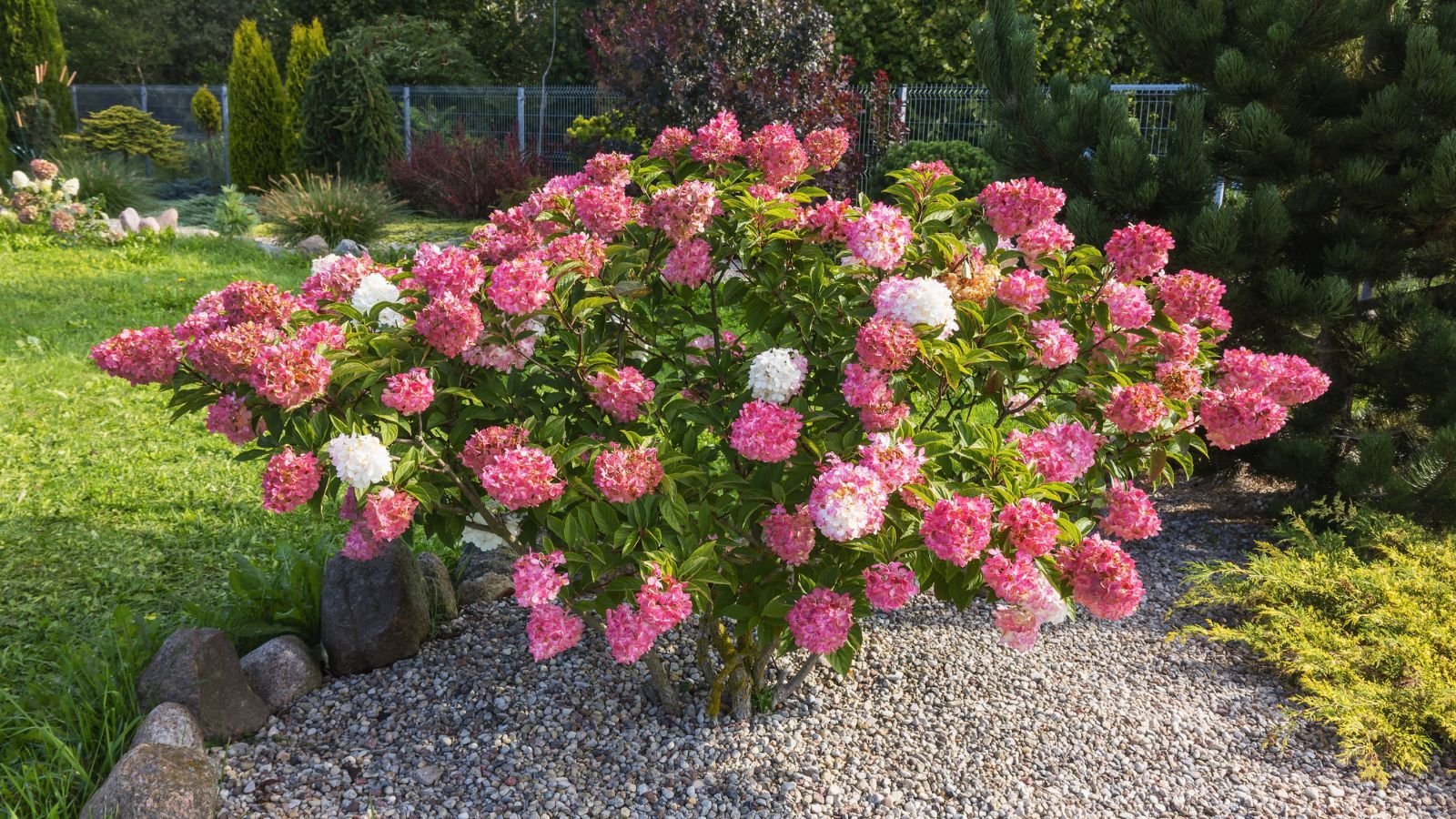
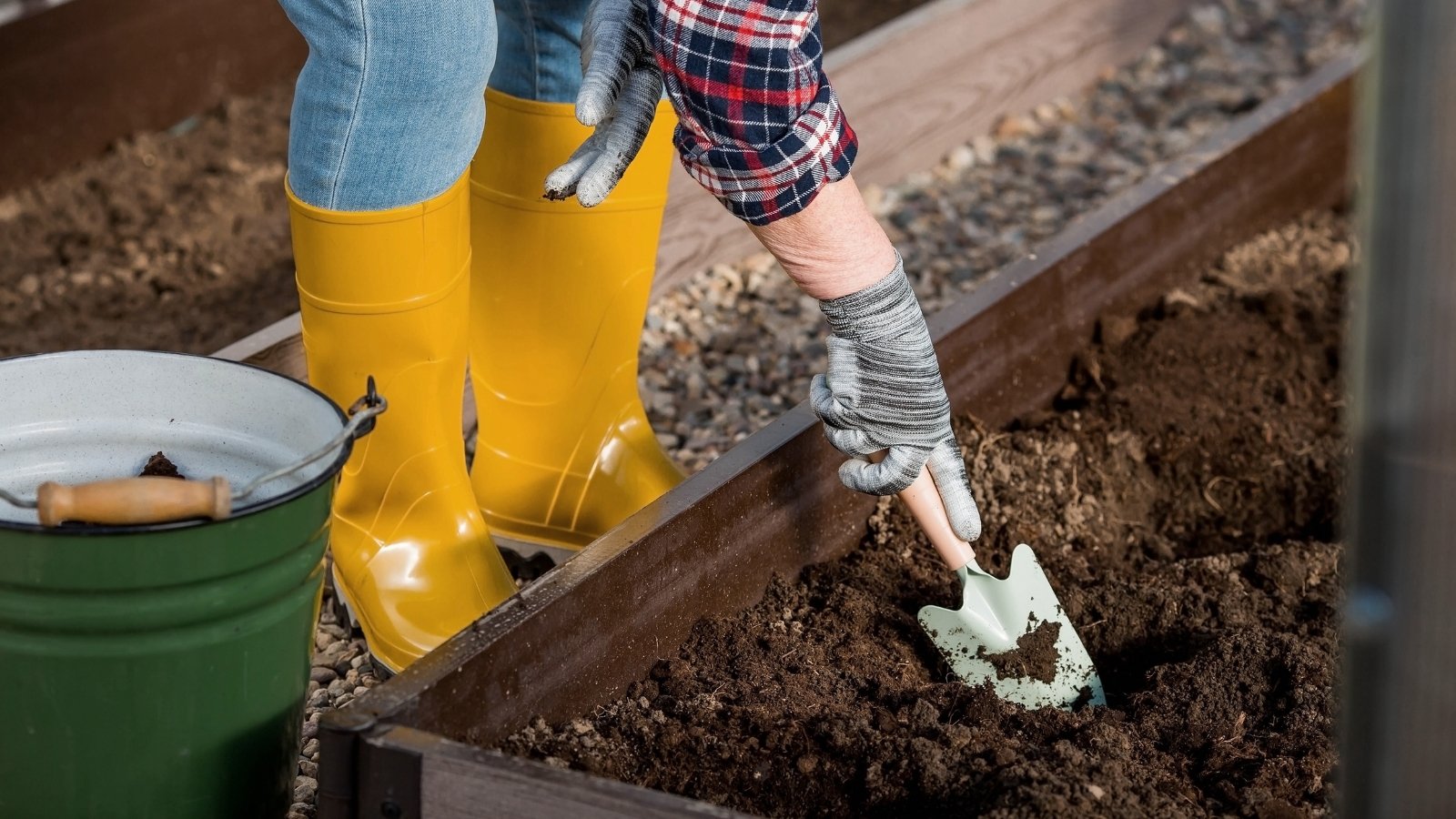

Leave a Reply